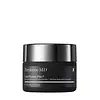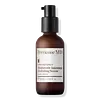What's inside
What's inside
 Key Ingredients
Key Ingredients

 Benefits
Benefits

 Concerns
Concerns

 Ingredients Side-by-side
Ingredients Side-by-side

Water
Skin ConditioningIsopropyl Palmitate
EmollientGlycerin
HumectantCetearyl Alcohol
EmollientGlyceryl Stearate
EmollientPEG-100 Stearate
Butylene Glycol
HumectantPhosphatidylcholine
EmulsifyingTetrahexyldecyl Ascorbate
AntioxidantDimethyl Mea
BufferingAcetyl Hexapeptide-8
HumectantPalmitoyl Tripeptide-1
Skin ConditioningPalmitoyl Tetrapeptide-7
Skin ConditioningTyrosine
MaskingEchium Plantagineum Seed Oil
Skin ConditioningGlycolic Acid
BufferingHydrolyzed Myrtus Communis Leaf Extract
Skin ProtectingCopper Tripeptide-1
Skin ConditioningHelianthus Annuus Seed Oil
EmollientMagnesium Aspartate
Skin ConditioningZinc Gluconate
Skin ConditioningCopper Gluconate
Skin ConditioningEthylhexylglycerin
Skin ConditioningRosmarinus Officinalis Leaf Extract
AntimicrobialSodium Hyaluronate
HumectantRetinyl Palmitate
Skin ConditioningDisodium EDTA
Carbomer
Emulsion StabilisingCeteareth-20
CleansingHydrogenated Vegetable Glycerides
EmollientDimethicone
EmollientCaprylyl Glycol
EmollientPolysorbate 20
EmulsifyingPhenoxyethanol
PreservativeSorbic Acid
PreservativePotassium Sorbate
PreservativeWater, Isopropyl Palmitate, Glycerin, Cetearyl Alcohol, Glyceryl Stearate, PEG-100 Stearate, Butylene Glycol, Phosphatidylcholine, Tetrahexyldecyl Ascorbate, Dimethyl Mea, Acetyl Hexapeptide-8, Palmitoyl Tripeptide-1, Palmitoyl Tetrapeptide-7, Tyrosine, Echium Plantagineum Seed Oil, Glycolic Acid, Hydrolyzed Myrtus Communis Leaf Extract, Copper Tripeptide-1, Helianthus Annuus Seed Oil, Magnesium Aspartate, Zinc Gluconate, Copper Gluconate, Ethylhexylglycerin, Rosmarinus Officinalis Leaf Extract, Sodium Hyaluronate, Retinyl Palmitate, Disodium EDTA, Carbomer, Ceteareth-20, Hydrogenated Vegetable Glycerides, Dimethicone, Caprylyl Glycol, Polysorbate 20, Phenoxyethanol, Sorbic Acid, Potassium Sorbate
Water
Skin ConditioningDimethicone
EmollientButylene Glycol
HumectantNiacinamide
SmoothingAcetyl Glucosamine
Skin ConditioningSqualane
EmollientSodium Acrylate/Sodium Acryloyldimethyl Taurate Copolymer
Emulsion StabilisingPolysilicone-11
Cetearyl Olivate
Hdi/Trimethylol Hexyllactone Crosspolymer
Polyisobutene
Sorbitan Olivate
EmulsifyingDimethyl Isosorbide
SolventPolysorbate 20
Emulsifying1,2-Hexanediol
Skin ConditioningCaprylyl Glycol
EmollientDimethyl Mea
BufferingHydroxyacetophenone
AntioxidantCitric Acid
BufferingCeramide NP
Skin ConditioningCaprylyl/Capryl Glucoside
CleansingSorbitan Oleate
EmulsifyingSodium Gluconate
Skin ConditioningSpermidine
AntioxidantSilica
AbrasiveSodium Acetylated Hyaluronate
HumectantSodium Hyaluronate
HumectantPhenoxyethanol
PreservativePhytosphingosine
Skin ConditioningSodium Hyaluronate Crosspolymer
HumectantHyaluronic Acid
HumectantEthylhexylglycerin
Skin ConditioningAcetyl Tetrapeptide-11
Skin ConditioningAcetyl Tetrapeptide-9
Skin ConditioningGlycerin
HumectantDisodium Acetyl Glucosamine Phosphate
Skin ConditioningSodium Glucuronate
HumectantMagnesium Sulfate
Water, Dimethicone, Butylene Glycol, Niacinamide, Acetyl Glucosamine, Squalane, Sodium Acrylate/Sodium Acryloyldimethyl Taurate Copolymer, Polysilicone-11, Cetearyl Olivate, Hdi/Trimethylol Hexyllactone Crosspolymer, Polyisobutene, Sorbitan Olivate, Dimethyl Isosorbide, Polysorbate 20, 1,2-Hexanediol, Caprylyl Glycol, Dimethyl Mea, Hydroxyacetophenone, Citric Acid, Ceramide NP, Caprylyl/Capryl Glucoside, Sorbitan Oleate, Sodium Gluconate, Spermidine, Silica, Sodium Acetylated Hyaluronate, Sodium Hyaluronate, Phenoxyethanol, Phytosphingosine, Sodium Hyaluronate Crosspolymer, Hyaluronic Acid, Ethylhexylglycerin, Acetyl Tetrapeptide-11, Acetyl Tetrapeptide-9, Glycerin, Disodium Acetyl Glucosamine Phosphate, Sodium Glucuronate, Magnesium Sulfate
Ingredients Explained
These ingredients are found in both products.
Ingredients higher up in an ingredient list are typically present in a larger amount.
Butylene Glycol (or BG) is used within cosmetic products for a few different reasons:
Overall, Butylene Glycol is a safe and well-rounded ingredient that works well with other ingredients.
Though this ingredient works well with most skin types, some people with sensitive skin may experience a reaction such as allergic rashes, closed comedones, or itchiness.
Learn more about Butylene GlycolCaprylyl Glycol is a humectant and emollient, meaning it attracts and preserves moisture.
It is a common ingredient in many products, especially those designed to hydrate skin. The primary benefits are retaining moisture, skin softening, and promoting a healthy skin barrier.
Though Caprylyl Glycol is an alcohol derived from fatty acids, it is not the kind that can dry out skin.
This ingredient is also used as a preservative to extend the life of products. It has slight antimicrobial properties.
Learn more about Caprylyl GlycolDimethicone is a type of synthetic silicone created from natural materials such as quartz.
What it does:
Dimethicone comes in different viscosities:
Depending on the viscosity, dimethicone has different properties.
Ingredients lists don't always show which type is used, so we recommend reaching out to the brand if you have questions about the viscosity.
This ingredient is unlikely to cause irritation because it does not get absorbed into skin. However, people with silicone allergies should be careful about using this ingredient.
Note: Dimethicone may contribute to pilling. This is because it is not oil or water soluble, so pilling may occur when layered with products. When mixed with heavy oils in a formula, the outcome is also quite greasy.
Learn more about DimethiconeWe don't have a description for Dimethyl Mea yet.
Ethylhexylglycerin (we can't pronounce this either) is commonly used as a preservative and skin softener. It is derived from glyceryl.
You might see Ethylhexylglycerin often paired with other preservatives such as phenoxyethanol. Ethylhexylglycerin has been found to increase the effectiveness of these other preservatives.
Glycerin is already naturally found in your skin. It helps moisturize and protect your skin.
A study from 2016 found glycerin to be more effective as a humectant than AHAs and hyaluronic acid.
As a humectant, it helps the skin stay hydrated by pulling moisture to your skin. The low molecular weight of glycerin allows it to pull moisture into the deeper layers of your skin.
Hydrated skin improves your skin barrier; Your skin barrier helps protect against irritants and bacteria.
Glycerin has also been found to have antimicrobial and antiviral properties. Due to these properties, glycerin is often used in wound and burn treatments.
In cosmetics, glycerin is usually derived from plants such as soybean or palm. However, it can also be sourced from animals, such as tallow or animal fat.
This ingredient is organic, colorless, odorless, and non-toxic.
Glycerin is the name for this ingredient in American English. British English uses Glycerol/Glycerine.
Learn more about GlycerinPhenoxyethanol is a preservative that has germicide, antimicrobial, and aromatic properties. Studies show that phenoxyethanol can prevent microbial growth. By itself, it has a scent that is similar to that of a rose.
It's often used in formulations along with Caprylyl Glycol to preserve the shelf life of products.
Polysorbate 20 is made by combining ethoxylation of sorbitan, ethylene oxide, and lauric acid. It is a mild cleansing agent, surfactant, and emulsifier.
As a surfactant, it helps collect dirt and oils for washing. Emulsifiers prevent oils and water from separating.
Polysorbate 20 also adds scent to a product. Since it is made using sorbitol, it has a sweet scent. Sorbitol can also be found in fruits such as apples and peaches.
The lauric acid used to create Polysorbate 20 is often derived from coconuts.
Polysorbate 20 may not be fungal acne safe.
Learn more about Polysorbate 20Sodium Hyaluronate is hyaluronic acid's salt form. It is commonly derived from the sodium salt of hyaluronic acid.
Like hyaluronic acid, it is great at holding water and acts as a humectant. This makes it a great skin hydrating ingredient.
Sodium Hyaluronate is naturally occurring in our bodies and is mostly found in eye fluid and joints.
These are some other common types of Hyaluronic Acid:
Learn more about Sodium HyaluronateWater. It's the most common cosmetic ingredient of all. You'll usually see it at the top of ingredient lists, meaning that it makes up the largest part of the product.
So why is it so popular? Water most often acts as a solvent - this means that it helps dissolve other ingredients into the formulation.
You'll also recognize water as that liquid we all need to stay alive. If you see this, drink a glass of water. Stay hydrated!
Learn more about Water